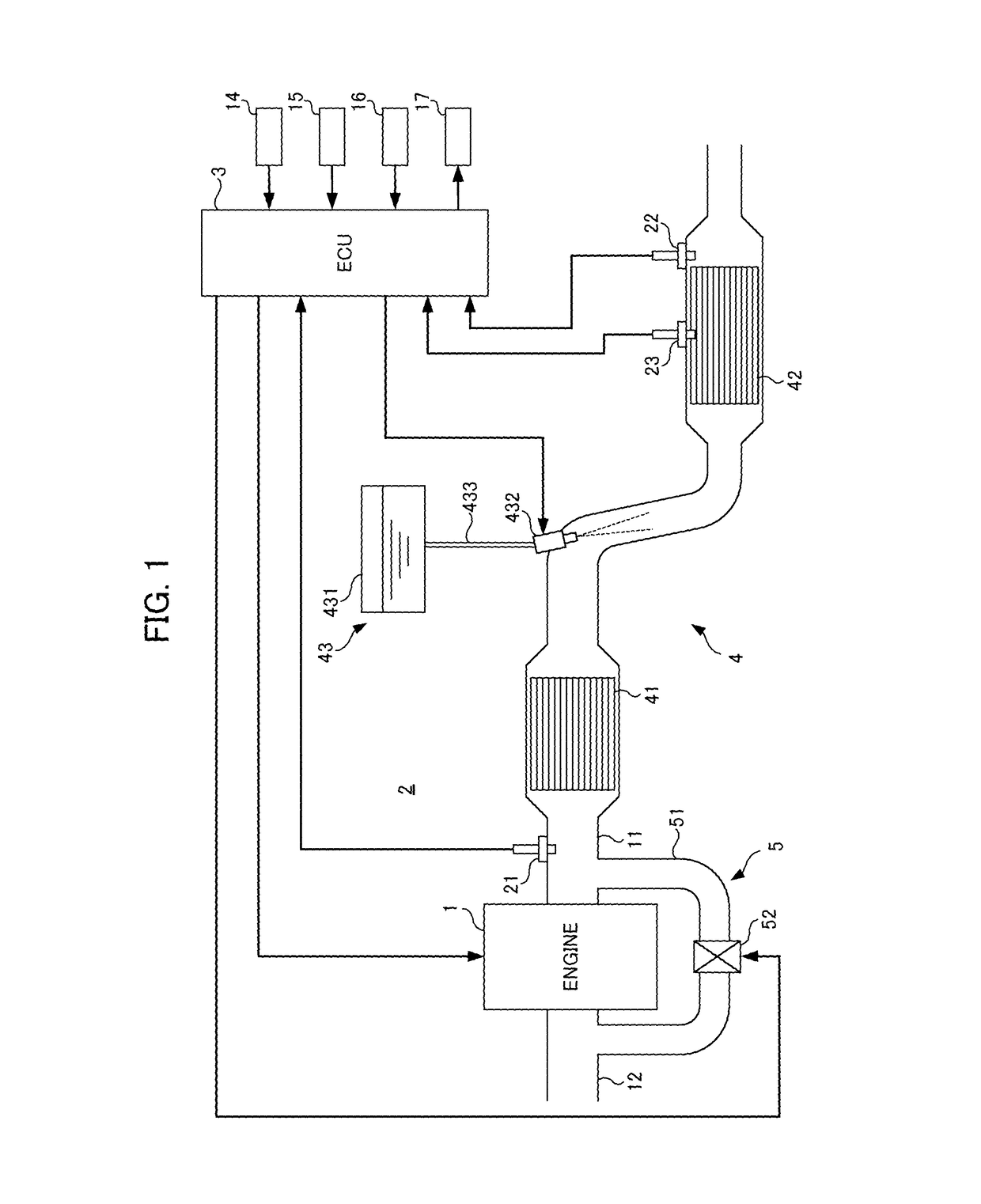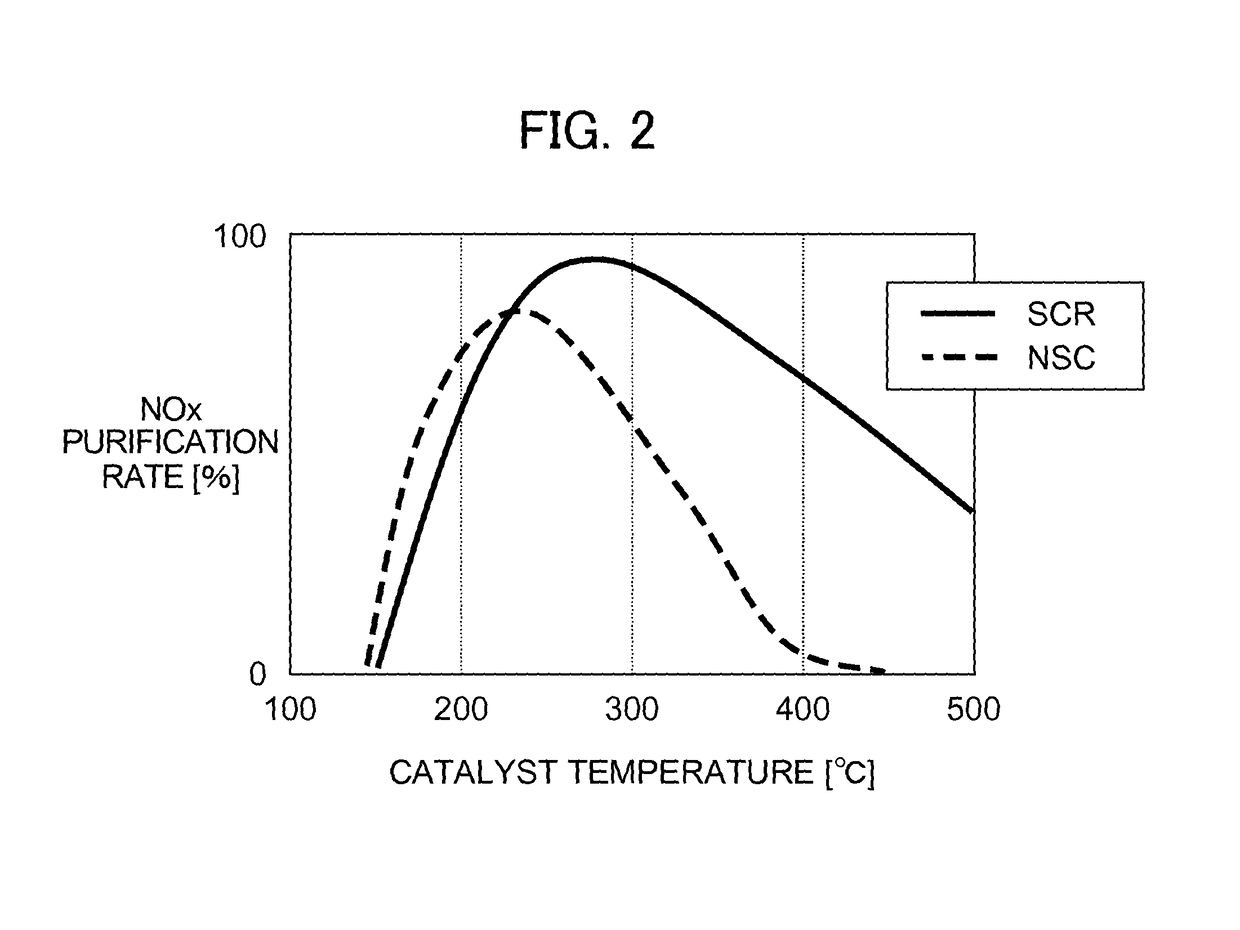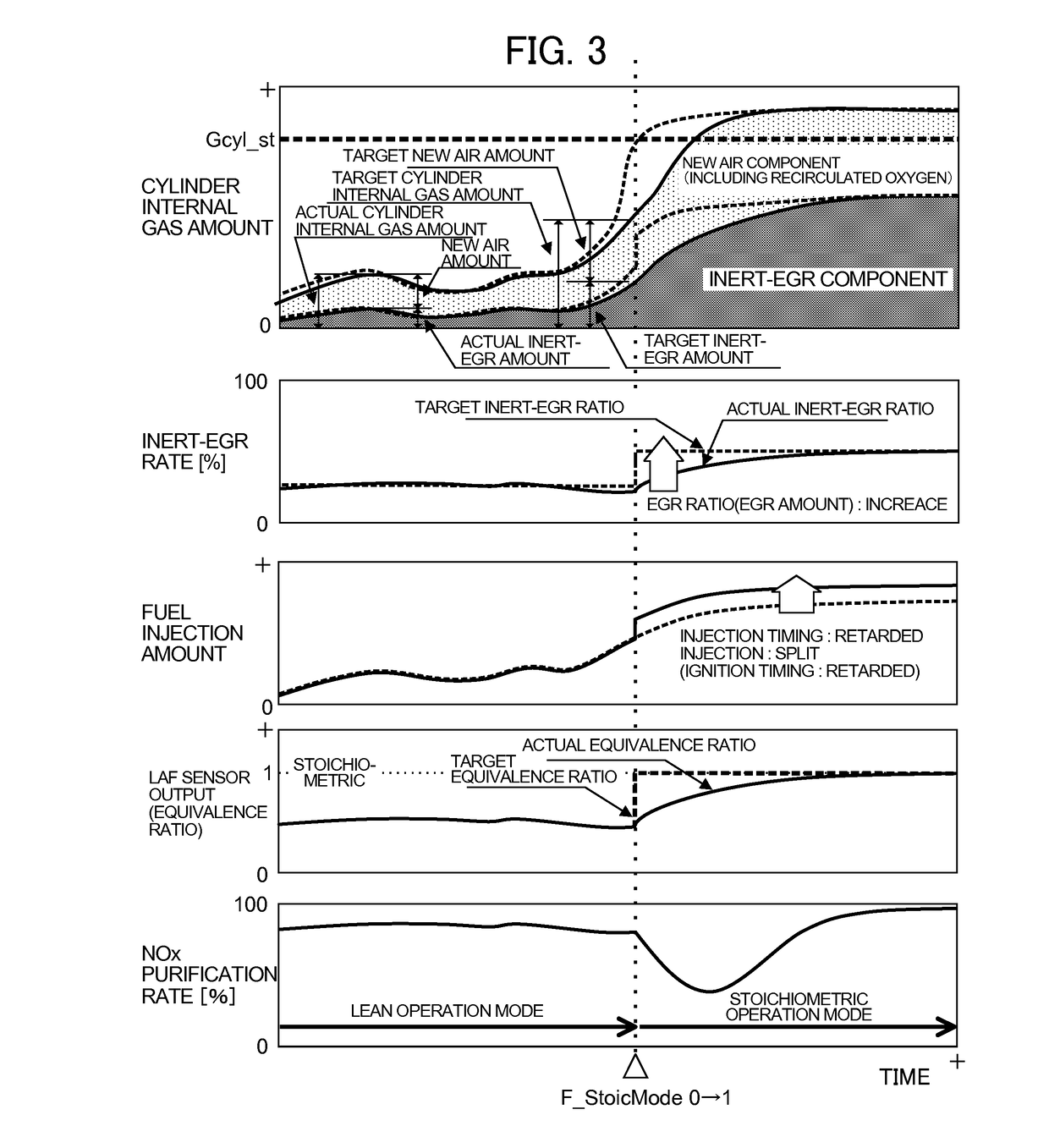[0017]According to the first aspect, the system from the fuel injection amount to the output of the exhaust gas sensor is modeled as the first model. In addition, the system from the value of the parameter obtained from this first model until the output of the exhaust gas sensor, i.e. model encompassed in the above first model, is modeled as the second model. The first identifying unit identifies, among the first and second model parameters included in the first model, the values of the first model parameters. The second identifying unit identifies the value of the second model parameter included in the above first model based on the output of the exhaust gas sensor. Then, the controller determines the value of the parameter for controlling the equivalence ratio of the air-fuel mixture of the engine using the first model parameters. In this way, the present invention can control the equivalence ratio with high precision, without causing overshoot or oscillatory behavior to occur in the output of the exhaust gas sensor, by way of controlling the equivalence ratio of the air-fuel mixture using the model. In addition, there is error (modeling error) between the actual system and the first model due to the influence of individual variation and ageing of various devices constituting the actual system. With the present invention, this modeling error can be reflected in the values of the first and second model parameters by the first and second identifying units. Therefore, according to the present invention, it is possible to control the equivalence ratio with high precision while making the influence due to individual variation, etc. of various devices a minimum.
[0018]Herein, the advantages of identifying the values of two types of model parameters (first and second model parameters) included in one model (first model) by two identifying units (first and second identifying units) will be explained. The above-mentioned modeling error, in addition to steady-state error caused by individual variation, etc. of various devices, is divided into dynamic error that can arise in the transitional characteristic of the output of the exhaust gas sensor, for example. These two types of error having different occurrence timings. Therefore, when simultaneously identifying the values of the above-mentioned two types of model parameters using only one identifying unit, since two types of errors cannot be isolated, as a result, the identification precision of the model parameter declines. By providing two identifying units, for example, the present invention can identify the values of the first model parameters so as to compensate for steady-state error with the first identifying unit, and identify the value of the second model parameter so as to compensate for dynamic error with the second identifying unit. In other words, it is possible to assign identifying units to every characteristic of error, and respectively identify the value of model parameters at appropriate timings with high precision. Therefore, according to the present invention, it is possible to control the equivalence ratio with high precision.
[0019]According to the second aspect of the present invention, it is possible to improve the identification precision of the second model parameter, by updating the value of the second model parameter while the output of the exhaust gas sensor is varying by way of the second identifying unit. It is thereby possible to also improve the identification precision of the first model parameters by way of the first identifying unit. Therefore, it is possible to control the equivalence ratio with high precision.
[0020]According to the third aspect, in the aforementioned way, the first identifying unit identifies, among the first and second model parameters included in the first model, the value of the first model parameters, and the second identifying unit identifies the value of the second model parameter. In other words, in order for the values of the first model parameters identified by the first identifying unit to be accurate, it is necessary for the value of the second model parameter to be accurately identified by the second identifying unit. Therefore, by the second identifying unit updating the value of the second model parameter under broader operating conditions than the first identifying unit, as a result, the identification precision of the first model parameters by way of the first identifying unit can also be improved.
[0021]According to the fourth aspect of the present invention, since the two types of model parameters are identified by two identifying units in the aforementioned way, it is possible to precisely identifying these model parameters. Therefore, by determining abnormality in the exhaust gas sensor using the second model parameter that has been precisely identified in this way, it is possible to precisely detect deterioration in the exhaust gas sensor.
[0022]According to the fifth aspect of the present invention, the first identifying unit calculates an estimated value for the output of the exhaust gas sensor from the fuel injection amount using the model formula using the second model parameter identified by the second identifying unit and the first model parameters, and simultaneously identifies the values of the first model parameters so that the error between this estimated value and the actual output of the sensor reaches a minimum. In other words, the first identifying unit can precisely identify the value of the first model parameter, by repeatedly performing the operations of the sensor output estimation operation unit and the identification operation unit.
 Login to View More
Login to View More  Login to View More
Login to View More 


